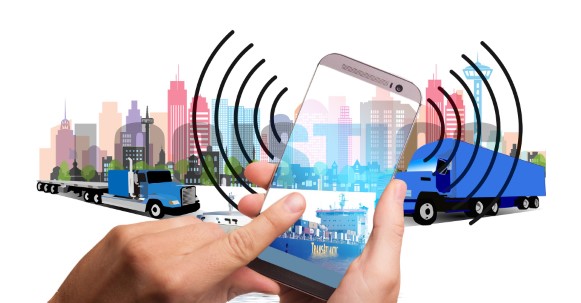Reverse logistics has become an essential component of the modern supply chain. This approach not only addresses the efficient management of the flow of products from the end consumer back to the manufacturer, but also focuses on value recovery and reducing environmental impact. In this FM Logistic article, we will explore what reverse logistics is, its purpose and how it is transforming the business and sustainable landscape. From product returns to recycling and reuse of materials, we will understand the importance of this process and its growing relevance in a world that increasingly values sustainability and operational efficiency.
What is reverse logistics and what is it for?
Reverse logistics refers to the process of planning, implementing and controlling the flow of materials and products from the point of consumption back to the point of origin. Unlike traditional logistics, which focuses on moving products from the producer to the consumer, reverse logistics deals with product return, recycling, reuse and waste disposal. Its main objective is to recover value from products and minimize environmental impact.
Functions
- Returns management: Handle products that customers return for various reasons, such as defects, exchanges or simply because they no longer need them.
- Recycling: Process recyclable materials to reduce the use of natural resources and minimize the amount of waste that ends up in landfills.
- Reuse and repair: Restore products to their original state or adapt them for reuse, thus extending their life cycle.
- Proper disposal: Dispose of products that cannot be reused or recycled in a manner that minimizes environmental impact.
Importance of reverse logistics
- Environmental sustainability: Reduces the amount of waste and promotes sustainable practices by recycling and reusing materials.
- Value recovery: Allows companies to recover value from returned products, either through resale, repair or recycling.
- Regulatory compliance: Helps companies comply with environmental and recycling regulations, which are becoming increasingly stringent in many countries.
- Improved reputation: Companies that implement reverse logistics practices can improve their public image and strengthen their brand as omnichannel and sustainable.
Benefits of reverse logistics
- Cost reduction: Through the reuse and recycling of materials, companies can reduce production and raw material acquisition costs.
- Improved operational efficiency: An effective reverse logistics system can optimize return and waste management processes, improving overall efficiency.
- Increased customer satisfaction: By offering flexible and sustainable return policies, companies can improve customer experience and foster loyalty.
- Innovation and new business opportunities: Reverse logistics can lead to innovation in products and processes, creating new market opportunities.
What are the disadvantages?
- High upfront costs: Implementing a reverse logistics system can require significant investment in infrastructure, technology and training.
- Operational complexity: Managing the flow of returned products and the recycling and reuse processes can be complex and require precise coordination.
- Need for collaboration: Reverse logistics often requires close collaboration with partners and suppliers, which can be difficult to manage.
- Cannibalization risk: In some cases, refurbished products may compete with new products, affecting sales and profit margins.
Types of reverse logistics
Reverse logistics can be divided into several types, each focusing on different aspects of product return and sustainability. Two of the main types are green or waste-free reverse logistics and reverse returns logistics.
Green or waste-free reverse logistics
Green reverse logistics focuses on sustainability and reducing environmental impact. Its main objective is to minimize waste generated by the company’s operations and promote environmentally friendly practices throughout the supply chain. This includes:
- Materials recycling: Recover and recycle materials from used products to reduce the need for new raw materials.
- Sustainable disposal: Ensure that products that cannot be reused or recycled are disposed of in a manner that minimizes environmental impact, such as through safe disposal programs or industrial composting.
- Sustainable design: Implement design strategies that facilitate recycling and reuse, such as design for disassembly.
Reverse logistics of returns
Reverse returns logistics focuses on the efficient management of products that customers return. This can be for reasons such as defects, dissatisfaction, excess inventory, or end of product life. The main activities in this type of reverse logistics include:
- Returns processing: Receiving, inspecting and sorting returned products to determine their destination, whether resale, repair, recycling or disposal.
- Inventory management: Adjust inventories to reflect returns and optimize the availability of reconditioned or refurbished products.
- Return policies: Develop and manage clear and effective return policies to improve customer satisfaction and operational efficiency.
- Returns analysis: Evaluate the reasons behind returns to identify areas for improvement in production, product design and customer service.
How do we manage reverse logistics at FM Logistic?
Reverse logistics management service from FM Logistic
Our FM Logistic reverse logistics management service covers a range of activities, from receiving and sorting returned products to repair, reconditioning and recycling. We focus on providing tailor-made solutions that optimize return processes and maximize value recovery.
Reasons for implementing reverse logistics actions
Reverse logistics is essential for companies for reasons of sustainability and cost savings. It helps reduce waste and comply with environmental regulations by facilitating the recovery and recycling of materials. This not only minimizes environmental impact, but can also result in significant savings by reusing materials and components, lowering production costs and optimizing inventory management.
In addition, reverse logistics improves corporate image and customer loyalty, who increasingly value sustainable practices. It also enables innovation towards circular business models and can improve operational efficiency by effectively managing returns and warranties. These practices not only help meet legal obligations, but also open up new revenue opportunities and improve customer service.




